NEO is leading the way in the robotics field. What projects does Robotic have that are worth paying attention to?
The day before yesterday, the humanoid robot company 1X Technologies from Norway officially unveiled the NEO robot and opened pre-orders, priced at $20,000. It also supports a monthly subscription model (at $499 per month) and is expected to begin deliveries in 2026. Tesla also stated that robots will be the next major profit driver. It seems that robots are very likely to be the next big thing.

A humanoid robot that can perform tasks such as taking out the trash, folding clothes, delivering items, setting the table, and other household chores. This should be a product that appeared in many of our childhood essays but is now about to become a reality. This kind of news is undoubtedly the focus of attention for many people. In the crypto world, a meme coin named $NEO on Solana once surpassed a $4 million market cap and currently still holds a $2.7 million market cap.

Furthermore, the on-chain fundraising platform Echo, created by Cobie and just acquired by Coinbase for $375 million, has a $10 million Series C funding allocation from 1X Technologies. However, since it was conducted in a private group, specific details are not known.
In addition to meme coins and Echo's funding amount, crypto projects related to robotics have also attracted attention, with many players referring to this sector as "Robotics." This article will organize projects related to the Robotics sector.
OpenMind

On August 4th, according to official sources, OpenMind, an intelligent machine infrastructure company headquartered in Silicon Valley, announced the completion of a $20 million funding round, led by Pantera Capital, with participation from Ribbit, Sequoia China, Coinbase Ventures, DCG, Lightspeed Faction, Anagram, Pi Network Ventures, Topology, Primitive Ventures, Amber Group, and many other institutions and well-known angel investors.
OpenMind helps robots think, learn, and work by developing open-source software. The native open-source AI robot operating system OM1 allows the configuration and deployment of AI Agents in the digital and physical worlds. Users can create an AI character, run it in the cloud, and also run it on a physical robot in the real world.
In simple terms, OpenMind's work on OM1 is equivalent to creating an "AI Brain" for robots. This "AI Brain" can be composed of multiple AI Agents working together, interacting with multiple LLMs, and gathering data from various sources to perform tasks (such as helping users post on social media). Since OM1 is open-source, it serves as a highly adaptable robot operating system, similar to how Android is hardware-agnostic.
Additionally, OpenMind has a blockchain-based robot identity network called FABRIC, aimed at providing a verifiable trust layer for both humans and robots. Humans can engage on the network by sharing location data through maps, assessing robot behavior, and contributing to development to earn badges. For robots, every robot equipped with the OM1 system will join the FABRIC network, thus establishing a unique verifiable identity for the robot and enabling tracking of its commands, operation logs, ownership, and other related activities on the blockchain.
OpenMind has not yet conducted a token issuance.
XMAQUINA

XMAQUINA is a robot investment DAO. Its governance token $DEUS completed a 3-round sale, raising over $5.5 million in crypto assets. Currently, the DAO has begun using the auction proceeds to support three companies in the humanoid robot sector: Apptronik, Figure AI, and Agility Robotics. From the treasury screenshot on the official website, it is evident that the DAO's investments have started to generate profits, with some returns exceeding 100% in a single transaction.

However, $DEUS has not yet undergone a Token Generation Event (TGE). During the TGE, 33% of the $DEUS allocated for community sale will be immediately unlocked, while the remaining 67% will be linearly vested over 12 months.
peaq

On March 27, the DePIN Layer1 protocol Peaq concluded a $15 million fundraising round, with Generative Ventures and Borderless Capital leading the investment. Other participants included Spartan Group, HV Capital, CMCC Global, Animoca Brands, Moonrock Capital, Fundamental Labs, TRGC, DWF Labs, Crit Ventures, Cogitent Ventures, NGC Ventures, Agnostic Fund, and Altana Wealth.
Although the initially highlighted narrative was DePIN, the project has shown a keen sensitivity to the market, with a recent follow-up on the x402 project, which recently surged in popularity. On the robotics front, peaq released the Robotics SDK in September of this year, enabling robots to obtain self-sovereign identity, engage in payments and receipts, validate data, and participate in the on-chain networked economy.
Furthermore, peaq also features a Robotic RWA Market, bringing robot tokenization onto the chain as a shared revenue-generating asset. In 2025, on the main stage of Korea Blockchain Week, peaq unveiled the first tokenized robot-operated farm deployed on the peaq chain, distributing operational profits to token holders.
Currently, the circulating market cap of $peaq is approximately $110 million.
PrismaX

On June 17, PrismaX announced the completion of a $11 million funding round, with investors including a16z CSX, Volt Capital, Blockchain Builders Fund, Stanford Blockchain Accelerator, and Virtuals.
PrismaX is building an open coordination layer connecting remote operators, robot users, and robot companies. Operators can connect with users, remotely control robots, perform physical tasks, and gather valuable data. They can also request real-world services such as logistics and advertising.
PrismaX features a protocol for remotely operating robots, where enterprises can find skilled and experienced robot operators for complex tasks, and operators can choose to stake network tokens to increase trust and access high-paying tasks. Rewards for stakers are not only based on the amount staked but also on the quality of their work. As work efficiency improves, additional incentives are granted.
The data accumulated through remote operations is used to train robots, enhancing their autonomy and in turn improving the efficiency of remote operators, ultimately achieving high levels of automation or even full autonomy for robots.
PrismaX has not yet issued a coin.
CodecFlow

CodecFlow provides a unified platform that seamlessly operates in the cloud, at the edge, on desktop and robot hardware, while supporting popular APIs and legacy systems.
AI-driven operators, through perception and real-time inference, respond to changes in a software UI or robot environment to address the fragility of traditional robot automation processes that rely too heavily on pre-written scripts, even in the face of subtle changes.
In short, it captures screenshots, camera images, or sensor data, then processes this external input data with AI to interpret observations or instructions, ultimately executing decisions through user interface interaction.
Currently, the $CODEC token has a market cap of approximately $16 million.
NRN Agents

NRN has evolved from AI Agent real-time training chain game AI Arena. On October 28, 2021, developer ArenaX Labs announced the completion of a $5 million seed round, led by Paradigm Capital with participation from Framework Venture Partners. On January 9, 2024, ArenaX Labs announced the completion of a new $6 million round of funding led by Framework Ventures, with participation from SevenX Ventures, FunPlus/Xterio, and Moore Strategic Ventures.
While it largely follows the process of data collection -> reinforcement learning for robots, with its rich experience in the gaming sector, NRN offers a browser-based experience, transforming robot data collection into a game where users can intuitively control simulated robots through a browser. During the game, user-operated behavior data is used to train real-world robot systems.
In the current phase, the project will focus on a robotic arm (RME-1) to validate data collection, real-time learning, and adaptability.
Currently, the $NRN token has a market cap of approximately $11.7 million.
Auki

The decentralized machine perception network Posemesh by Auki is used to connect humans, devices, and AI, with its core being a DePIN (Decentralized Entity Network) architecture that allows robots, AR glasses, and other devices to share real-time location and sensor data, collaboratively building a spatial understanding of the physical world, and providing a shared spatial view for robots, AR, and AI.
Various node roles have been designed based on the Posemesh protocol. Computational nodes provide computing power, motion nodes (robot terminals) upload location information and sensor data, reconstruction nodes generate 3D map models based on this data, and domain nodes manage the 3D space. Each node receives $AUKI token rewards based on their contribution, driving a self-evolving machine vision network.
This network emphasizes privacy protection to avoid a single entity monitoring users' private spaces. It can be applied to multiple scenarios such as retail (product placement optimization), property management (asset tracking), exhibition navigation, architectural design, and other scenarios.
Currently, the $AUKI token has a market value of approximately 52 million USD.
RobotStack

RoboStack is a cloud-based robot development and deployment platform that provides developers with a simulation environment and sandbox testing. The platform is described to simulate a real environment in the cloud, featuring a secure sandbox mechanism, high-performance computing capabilities, real-time metrics, and team collaboration features.
To address the challenge of integrating robot technology across different hardware, middleware, and communication standards for training, RoboStack introduces the Robot Context Protocol (RCP), allowing secure communication between robots, AI agents, and humans. The simulated environment will include token-based voting and incentive mechanisms to foster competition among developers and enthusiasts, facilitating the deployment of real robot applications in future multi-chain environments.
Currently, the $ROBOT token has a market value of approximately 3 million USD.
BitRobot

The BitRobot Network, developed jointly by FrodoBots Lab and Protocol Labs, aims to achieve distributed robot work and collaboration. Its key components include: Verifiable Robot Work (VRW) for defining and validating robot tasks (a quantifiable metric for network rewards), Entity Node Tokens (ENT) for device ownership and network access (unique identity for robots in the system existing in NFT form), and subnets as the task execution operation layer (a resource cluster that creates value for the BitRobot Network).
On February 14, FrodoBots Lab announced the completion of a $6 million seed funding round, bringing the total funding to $8 million.
Currently, BitRobot has not yet been launched. It is worth noting that FrodoBots Lab itself has been selling robots. The Earth Rovers, resembling real-life Mario Karts, are priced at $249. Players remotely control their sidewalk robots in a global treasure hunt game, providing data for researchers to deploy and test their latest AI navigation models. There is also a possibility of launching a coin for this.
Another game robot, ET Fugi, will also be launched in the future, allowing players to remotely control a robotic arm to complete various 3D puzzle games and competitions. ET Fugi is also the first subnet of BitRobot.
You may also like

Blockchains Quietly Prepare for Quantum Threat as Bitcoin Debates Timeline
Key Takeaways: Several blockchains, including Ethereum, Solana, and Aptos, are actively preparing for the potential threat posed by…
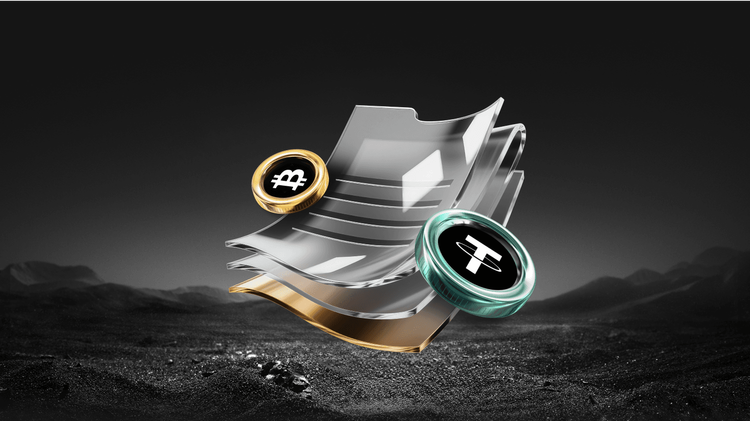
Former SEC Counsel Explains What It Takes to Make RWAs Compliant
Key Takeaways The SEC’s shifting approach is aiding the growth of Real-World Assets (RWAs), but jurisdictional and yield…
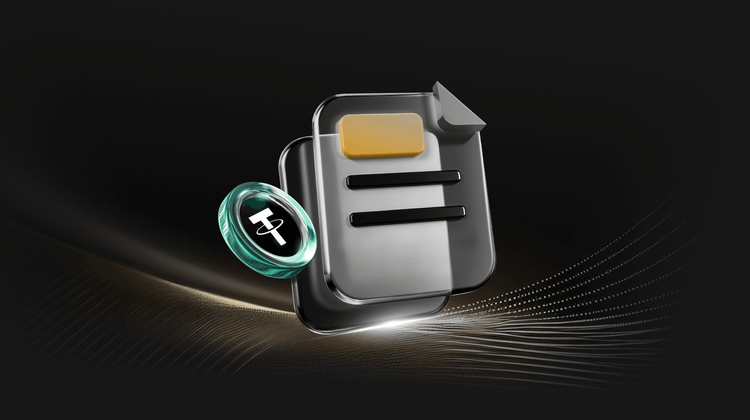
How Ondo Finance plans to bring tokenized US stocks to Solana
Key Takeaways Ondo Finance aims to implement tokenized US stocks and ETFs on Solana by early 2026, enhancing…
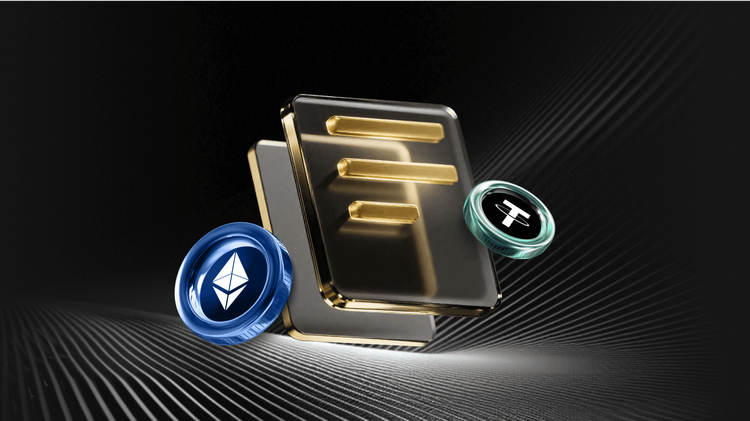
Palmer Luckey’s Erebor Reaches $4.3B Valuation as Bank Charter Progresses
Key Takeaways: Erebor, a digital bank co-founded by Palmer Luckey, has raised $350 million, bringing its valuation to…
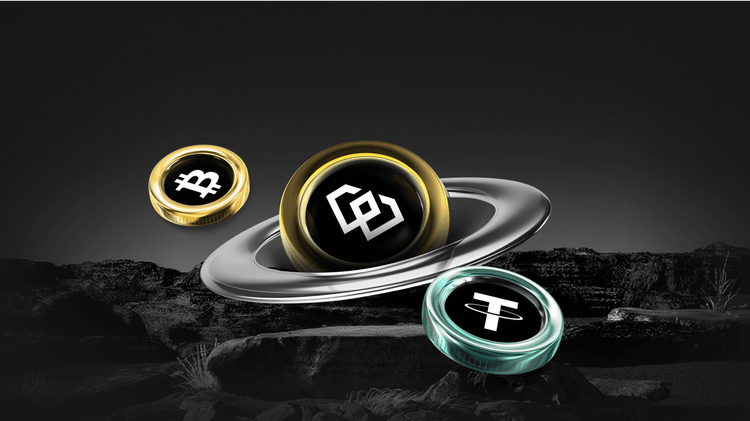
Trump Family-Linked USD1 Stablecoin Gains $150M as Binance Unveils Yield Program
Key Takeaways The USD1 stablecoin, associated with the Trump family, increased its market capitalization by $150 million following…

Web3 and DApps in 2026: A Utility-Driven Year for Crypto
Key Takeaways The transition to utility in the crypto sector has set a new path for 2026, emphasizing…

December 24th Market Key Intelligence, How Much Did You Miss?

Kalshi First Research Report: When Predicting CPI, Crowd Wisdom Beats Wall Street Analysts

Aave Community Governance Drama Escalates, What's the Overseas Crypto Community Talking About Today?

Key Market Information Discrepancy on December 24th - A Must-See! | Alpha Morning Report
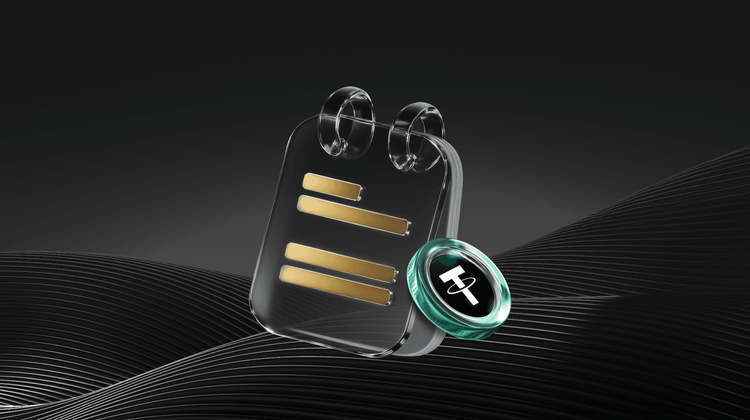
CFTC Welcomes New Chairman, Which Way Will Crypto Regulation Go?

Polymarket Announces In-House L2, Is Polygon's Ace Up?
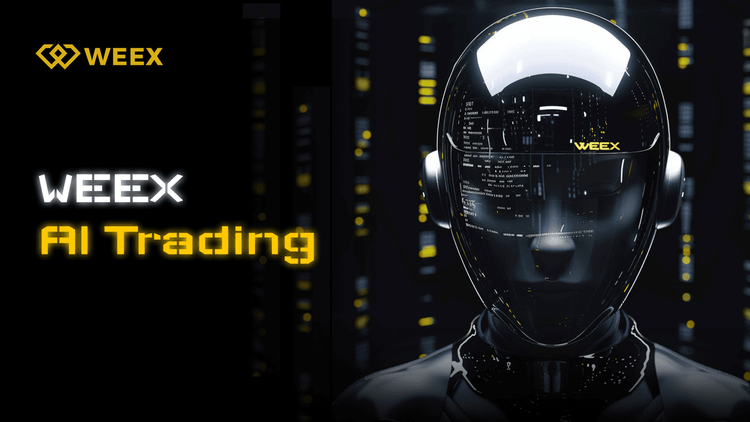
AI Trading Risks in Crypto Markets: Who Takes Responsibility When It Fails?
AI trading is already core market infrastructure, but regulators still treat it as a tool — responsibility always stays with the humans and platforms behind it. The biggest risk in 2025 is not rogue algorithms, but mass-adopted AI strategies that move markets in sync and blur the line between tools and unlicensed advice. The next phase of AI trading is defined by accountability and transparency, not performance — compliance is now a survival requirement, not a constraint.

Ether pumps to outsiders, dumps in-house. Can Tom Lee's team still be trusted?

Coinbase Joins Prediction Market, AAVE Governance Dispute - What's the Overseas Crypto Community Talking About Today?
Over the past 24 hours, the crypto market has shown strong momentum across multiple dimensions. The mainstream discussion has focused on Coinbase's official entry into the prediction market through the acquisition of The Clearing Company, as well as the intense controversy within the AAVE community regarding token incentives and governance rights.
In terms of ecosystem development, Solana has introduced the innovative Kora fee layer aimed at reducing user transaction costs; meanwhile, the Perp DEX competition has intensified, with the showdown between Hyperliquid and Lighter sparking widespread community discussion on the future of decentralized derivatives.
This week, Coinbase announced the acquisition of The Clearing Company, marking another significant move to deepen its presence in this field after last week's announcement of launching a prediction market on its platform.
The Clearing Company's founder, Toni Gemayel, and the team will join Coinbase to jointly drive the development of the prediction market business.
Coinbase's Product Lead, Shan Aggarwal, stated that the growth of the prediction market is still in its early stages and predicts that 2026 will be the breakout year for this field.
The community has reacted positively to this, generally believing that Coinbase's entry will bring significant traffic and compliance advantages to the prediction market. However, this has also sparked discussions about the industry's competitive landscape.
Jai Bhavnani, Founder of Rivalry, commented that for startups, if their product model proves to be successful, industry giants like Coinbase have ample reason to replicate it.
This serves as a reminder to all entrepreneurs in the crypto space that they must build significant moats to withstand competition pressure from these giants.
Regulated prediction market platform Kalshi launched its research arm, Kalshi Research, this week, aimed at opening its internal data to the academic community and researchers to facilitate exploration of prediction market-related topics.
Its inaugural research report highlights Kalshi's outperformance in predicting inflation compared to Wall Street's traditional models. Kalshi co-founder Luana Lopes Lara commented that the power of prediction markets lies in the valuable data they generate, and it is now time to better utilize this data.
Meanwhile, Kalshi announced its support for the BNB Chain (BSC), allowing users to deposit and withdraw BNB and USDT via the BSC network.
This move is seen as a significant step for Kalshi to open its platform to a broader crypto user base, aiming to unlock access to the world's largest prediction market. Furthermore, Kalshi also revealed plans to host the first Prediction Market Summit in 2026 to further drive industry engagement and development.
The AAVE community recently engaged in heated debates around an Aave Improvement Proposal (AIP) titled "AAVE Tokenomics Alignment Phase One - Ownership Governance," aiming to transfer ownership and control of the Aave brand from Aave Labs to Aave DAO.
Aave founder Stani Kulechov publicly stated his intention to vote against the proposal, believing it oversimplifies the complex legal and operational structure, potentially slowing down the development process of core products like Aave V4.
The community's reaction was polarized. Some criticized Stani for adopting a "double standard" in governance and questioned whether his team had siphoned off protocol revenue, while others supported his cautious stance, arguing that significant governance changes require more thorough discussion.
This controversy highlights the tension between the ideal of DAO governance in DeFi projects and the actual power held by core development teams.
Despite governance disputes putting pressure on the AAVE token price, on-chain data shows that Stani Kulechov himself has purchased millions of dollars' worth of AAVE in the past few hours.
Simultaneously, a whale address, 0xDDC4, which had been quiet for 6 months, once again spent 500 ETH (approximately $1.53 million) to purchase 9,629 AAVE tokens. Data indicates that this whale has accumulated nearly 40,000 AAVE over the past year but is currently in an unrealized loss position.
The founder and whale's increased holdings during market volatility were interpreted by some investors as a confidence signal in AAVE's long-term value.
In this week's top article, Morpho Labs' "Curator Explained" detailed the role of "curators" in DeFi.
The article likened curators to asset managers in traditional finance, who design, deploy, and manage on-chain vaults, providing users with a one-click diversified investment portfolio.
Unlike traditional fund managers, DeFi curators execute strategies automatically through non-custodial smart contracts, allowing users to maintain full control of their assets. The article offered a new perspective on the specialization and risk management in the DeFi space.
Another widely circulated article, "Ethereum 2025: From Experiment to Global Infrastructure," provided a comprehensive summary of Ethereum's development over the past year. The article noted that 2025 is a crucial year for Ethereum's transition from an experimental project to global financial infrastructure. Through the Pectra and Fusaka hard forks, Ethereum achieved significant reductions in account abstraction and transaction costs.
Furthermore, the SEC's clarification of Ethereum's "non-securities" nature and the launch of tokenized funds on the Ethereum mainnet by traditional financial giants like JPMorgan marked Ethereum's gaining recognition from mainstream institutions. The article suggested that whether it is the continued growth of DeFi, the thriving L2 ecosystem, or the integration with the AI field, Ethereum's vision as the "world computer" is gradually becoming a reality.
The Solana Foundation engineering team released a fee layer solution called Kora this week.
Kora is a fee relayer and signatory node designed to provide the Solana ecosystem with a more flexible transaction fee payment method. Through Kora, users will be able to achieve gas-free transactions or choose to pay network fees using any stablecoin or SPL token. This innovation is seen as an important step in lowering the barrier of entry for new users and improving Solana network's availability.
Additionally, a deep research report on propAMM (proactive market maker) sparked community interest. The report's data analysis of propAMMs on Solana like HumidiFi indicated that Solana has achieved, or even surpassed, the level of transaction execution quality in traditional finance (TradFi) markets.
For example, on the SOL-USDC trading pair, HumidiFi is able to provide a highly competitive spread for large trades (0.4-1.6 bps), which is already better than the trading slippage of some mid-cap stocks in traditional markets.
Research suggests that propAMM is making the vision of the "Internet Capital Market" a reality, with Solana emerging as the prime venue for all of this to happen.
The competition in the perpetual contract DEX (Perp DEX) space is becoming increasingly heated.
In its latest official article, Hyperliquid has positioned its emerging competitor, Lighter, alongside centralized exchanges like Binance, referring to it as a platform utilizing a centralized sequencer. Hyperliquid emphasizes its transparency advantage of being "fully on-chain, operated by a validator network, and with no hidden state."
The community widely interprets this as Hyperliquid declaring "war" on Lighter. The technical differences between the two platforms have also become a focal point of discussion: Hyperliquid focuses on ultimate on-chain transparency, while Lighter emphasizes achieving "verifiable execution" through zero-knowledge proofs to provide users with a Central Limit Order Book (CLOB)-like trading experience.
This battle over the future direction of decentralized derivatives exchanges is expected to peak in 2026.
Meanwhile, discussions about Lighter's trading fees have surfaced. Some users have pointed out that Lighter charged as much as 81 basis points (0.81%) for a $2 million USD/JPY forex trade, far exceeding the near-zero spreads of traditional forex brokers.
Some argue that Lighter does not follow a B-book model that bets against market makers, instead anchoring its prices to the TradFi market, and the high fees may be related to the current liquidity or market maker balance incentives. Providing a more competitive spread for real-world assets (RWA) in the highly volatile crypto market is a key issue Lighter will need to address in the future.
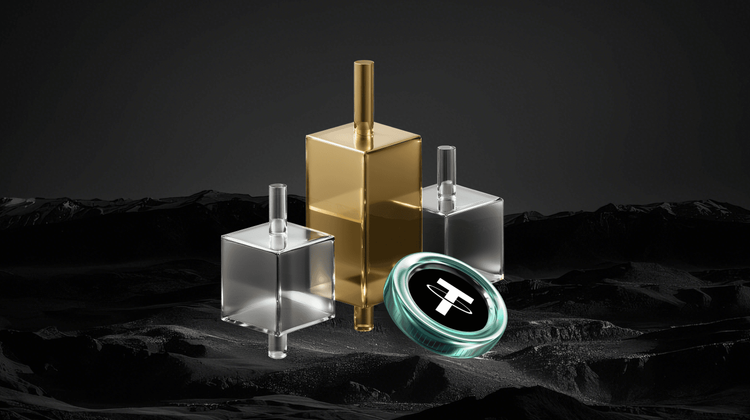
Why Did Market Sentiment Completely Collapse in 2025? Decoding Messari's Ten-Thousand-Word Annual Report

Beacon Guiding Directions, Torches Contending Sovereignty: A Covert AI Allocation War
Key Takeaways The AI that rules today’s landscape exists in two forms—a centralized “lighthouse” model by major tech…

Decoding the Next Generation AI Agent Economy: Identity, Recourse, and Attribution
Key Takeaways AI agents require the development of robust identity, recourse, and attribution systems to operate autonomously and…
Blockchains Quietly Prepare for Quantum Threat as Bitcoin Debates Timeline
Key Takeaways: Several blockchains, including Ethereum, Solana, and Aptos, are actively preparing for the potential threat posed by…
Former SEC Counsel Explains What It Takes to Make RWAs Compliant
Key Takeaways The SEC’s shifting approach is aiding the growth of Real-World Assets (RWAs), but jurisdictional and yield…
How Ondo Finance plans to bring tokenized US stocks to Solana
Key Takeaways Ondo Finance aims to implement tokenized US stocks and ETFs on Solana by early 2026, enhancing…
Palmer Luckey’s Erebor Reaches $4.3B Valuation as Bank Charter Progresses
Key Takeaways: Erebor, a digital bank co-founded by Palmer Luckey, has raised $350 million, bringing its valuation to…
Trump Family-Linked USD1 Stablecoin Gains $150M as Binance Unveils Yield Program
Key Takeaways The USD1 stablecoin, associated with the Trump family, increased its market capitalization by $150 million following…
Web3 and DApps in 2026: A Utility-Driven Year for Crypto
Key Takeaways The transition to utility in the crypto sector has set a new path for 2026, emphasizing…
Popular coins
Latest Crypto News
Customer Support:@weikecs
Business Cooperation:@weikecs
Quant Trading & MM:bd@weex.com
VIP Services:support@weex.com
